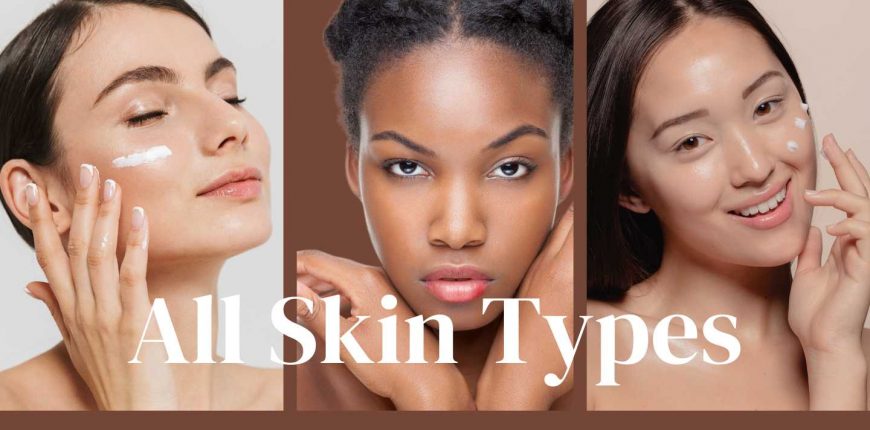The skin is the largest organ of the human body and serves as a protective barrier against the external environment. But not all human skin is the same. In fact, there are several types of skin, each with its own unique characteristics and needs. In this article, we will explore the different types of human skin and their distinct features.
- Normal Skin: Normal skin is often referred to as “well-balanced” skin. It is neither too oily nor too dry and has a healthy texture and appearance. Normal skin typically has a good balance of oil and moisture, and it is not prone to excessive oiliness or dryness. Normal skin usually has small pores, a smooth texture, and an even tone. People with normal skin generally have few or no skin problems and require minimal skincare maintenance.
- Oily Skin: Oily skin is characterized by an overproduction of sebum, the natural oil produced by the skin. This type of skin tends to have larger pores, a shiny or greasy appearance, and is more prone to acne breakouts. Oily skin may also feel sticky or slick to the touch, and makeup may not stay on as well as on other skin types. People with oily skin often need to cleanse their skin more frequently to control excess oil production and prevent clogged pores.
- Dry Skin: Dry skin lacks sufficient moisture and oil, leading to a rough, tight, and sometimes flaky texture. It may also appear dull and lackluster. Dry skin can be caused by various factors, including genetics, environmental factors, and age. Dry skin may feel tight after cleansing, and fine lines and wrinkles may be more noticeable. Proper hydration and moisturization are crucial for those with dry skin to replenish and lock in moisture, nourishing the skin and improving its overall health and appearance.
- Combination Skin: Combination skin is a combination of different skin types on different areas of the face. Typically, the T-zone (forehead, nose, and chin) tends to be oily, while the cheeks and other areas are normal to dry. Combination skin can be challenging to manage, as different areas may require different skincare approaches. For instance, the T-zone may need oil-control products, while the cheeks may require more hydration. Customized skincare routines and products that address the specific needs of each area are essential for managing combination skin.
- Sensitive Skin: Sensitive skin is characterized by skin that is easily irritated and reacts to environmental triggers, such as harsh weather, certain skincare products, or allergens. People with sensitive skin may experience redness, itching, burning, and dryness. Sensitive skin requires gentle skincare products that are free from irritating ingredients, and patch testing new products is essential to avoid potential reactions.
- Aging or Mature Skin: Aging or mature skin undergoes natural changes as we age, including a decrease in collagen and elastin production, leading to the appearance of fine lines, wrinkles, and sagging. Mature skin may also experience dryness, thinning, and loss of elasticity. Skincare products that focus on hydration, firming, and nourishing the skin are important for addressing the specific needs of aging or mature skin.
In conclusion, human skin comes in various types, each with its unique characteristics and requirements. Understanding your skin type is essential for choosing appropriate skincare products and developing a skincare routine that addresses your specific needs. It’s always best to consult with a dermatologist or skincare professional for personalized advice on how to care for your skin type effectively and maintain healthy, radiant skin. Remember, regardless of your skin type, practicing good skincare habits such as regular cleansing, moisturizing, protecting from sun exposure, and staying hydrated can contribute to maintaining healthy skin.

